-
 Bitcoin
Bitcoin $101,898.5005
-0.75% -
 Ethereum
Ethereum $2,258.1125
-1.07% -
 Tether USDt
Tether USDt $1.0004
0.01% -
 XRP
XRP $2.0178
-2.93% -
 BNB
BNB $624.0243
-1.53% -
 Solana
Solana $134.3298
-0.90% -
 USDC
USDC $0.9999
0.01% -
 TRON
TRON $0.2675
-2.05% -
 Dogecoin
Dogecoin $0.1538
-1.96% -
 Cardano
Cardano $0.5482
-1.11% -
 Hyperliquid
Hyperliquid $35.5636
5.45% -
 Bitcoin Cash
Bitcoin Cash $453.4902
-1.66% -
 Sui
Sui $2.5134
-2.97% -
 UNUS SED LEO
UNUS SED LEO $9.1292
1.77% -
 Chainlink
Chainlink $11.8457
-1.60% -
 Stellar
Stellar $0.2312
-2.73% -
 Avalanche
Avalanche $16.9721
0.29% -
 Toncoin
Toncoin $2.7549
-3.82% -
 Shiba Inu
Shiba Inu $0.0...01081
-1.10% -
 Litecoin
Litecoin $80.8250
-0.71% -
 Hedera
Hedera $0.1374
0.21% -
 Monero
Monero $305.4827
-2.36% -
 Ethena USDe
Ethena USDe $1.0006
0.00% -
 Dai
Dai $1.0000
-0.01% -
 Polkadot
Polkadot $3.2085
-3.12% -
 Bitget Token
Bitget Token $4.0845
-3.13% -
 Uniswap
Uniswap $6.3353
-1.63% -
 Pi
Pi $0.5085
-0.70% -
 Pepe
Pepe $0.0...08913
-3.82% -
 Aave
Aave $232.7090
-0.58%
What does it mean when the SAR indicator turns red but the price does not rise significantly?
The SAR indicator turns red when the trend shifts from bullish to bearish, but in crypto markets, this doesn't always lead to a significant price drop due to volatility, low volume, or sideways movement.
Jun 23, 2025 at 11:07 am
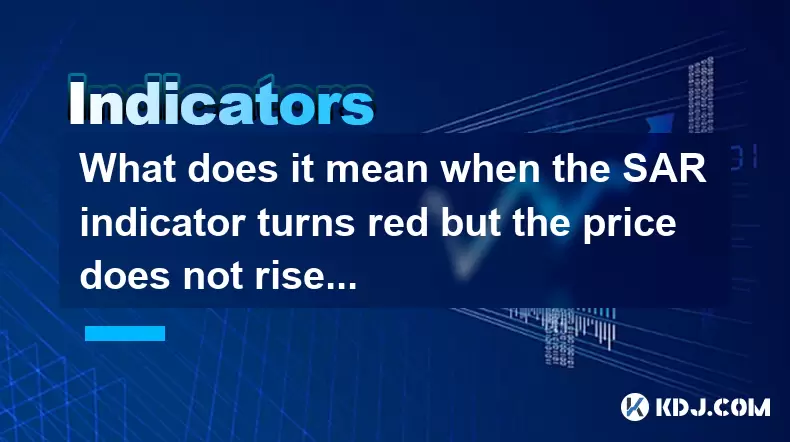
Understanding the SAR Indicator in Cryptocurrency Trading
The SAR indicator, or Parabolic SAR, is a popular technical analysis tool used by cryptocurrency traders to identify potential reversals in price movement. Developed by J. Welles Wilder, the SAR indicator appears on charts as a series of dots either above or below the price candles. When the dots are positioned below the price, it indicates an uptrend; when they move above, it signals a downtrend.
In the context of cryptocurrency markets, where volatility is high and trends can shift rapidly, understanding how the SAR behaves becomes crucial. Traders often rely on this indicator to determine entry and exit points. However, confusion arises when the SAR turns red (indicating a potential bearish reversal), but the price does not fall significantly or even remains flat.
Why Does the SAR Turn Red Without a Significant Price Drop?
When the SAR turns red, it means that the indicator has switched from being beneath the price (bullish) to above it (bearish). This typically suggests that the previous uptrend may be ending and a downtrend could be starting. However, in some cases, especially in crypto trading, the price doesn’t react strongly to this signal.
There are several possible reasons for this phenomenon:
- Market Indecision: In highly volatile crypto markets, sudden shifts in sentiment can cause the SAR to flip prematurely before a strong trend develops.
- Sideways Movement: If the market enters a consolidation phase, the SAR may switch sides multiple times without any significant directional movement in price.
- False Signal Due to Volatility: The SAR is known to generate false signals in choppy or sideways markets. Since cryptocurrencies often experience sharp but short-lived moves, these false signals are more common.
How Does the SAR Indicator Work in Strong vs Weak Trends?
To better understand why the SAR might turn red without affecting price much, it's essential to know how the indicator reacts in different trend conditions.
- Strong Uptrends: In a robust bullish trend, the SAR stays below the price with increasing acceleration. It only flips when the momentum clearly weakens.
- Weak Uptrends: In weaker trends, especially those prone to pullbacks, the SAR may flip early due to minor retracements, giving off premature sell signals.
- Downtrends: Once the SAR turns red and remains above the price, it confirms a bearish trend. However, if the downward pressure is minimal, the price may not drop substantially despite the SAR flipping.
This dynamic is particularly relevant in cryptocurrency trading, where many altcoins may show signs of weakness according to indicators like SAR, but due to low volume or lack of selling pressure, prices don't fall dramatically.
What Role Does Volume Play When SAR Turns Red But Price Doesn’t Fall?
Volume plays a critical role in validating any technical signal, including those generated by the SAR indicator. A SAR turning red should ideally coincide with increased selling volume. If that’s not the case, the signal may be unreliable.
- Low Volume During SAR Flip: If the SAR turns red during a period of low trading volume, it suggests that there isn’t enough selling pressure to push the price down significantly.
- High Volume Confirmation: Conversely, a red SAR accompanied by a surge in volume strengthens the bearish signal and increases the likelihood of a real downtrend forming.
In crypto markets, volume spikes often precede major price movements. Therefore, traders should always cross-check SAR signals with volume data to avoid acting on misleading information.
How Can Traders Respond to a Red SAR Without Price Decline?
When faced with a situation where the SAR turns red but the price doesn’t fall, traders need to assess the broader context before making decisions.
Here are actionable steps traders can take:
- Monitor Market Conditions: Evaluate whether the market is trending or consolidating. In ranging markets, the SAR tends to give false signals frequently.
- Combine With Other Indicators: Use complementary tools such as MACD, RSI, or moving averages to confirm the SAR’s signal. For example, if RSI shows oversold conditions while SAR turns red, it might indicate a temporary pullback rather than a full reversal.
- Observe Candlestick Patterns: Look for candlestick formations that suggest continuation or reversal. A bullish engulfing pattern appearing after a red SAR might mean the downtrend is failing.
- Wait for Reconfirmation: Instead of acting immediately, wait for the price to close below key support levels or for additional confirmation from other indicators before taking action.
By adopting a cautious and analytical approach, traders can avoid premature exits or entries based solely on SAR signals.
Can the SAR Indicator Be Adjusted for Better Accuracy in Crypto Markets?
Yes, the SAR indicator includes parameters that traders can adjust to suit the unique characteristics of cryptocurrency markets.
- Acceleration Factor (AF): This determines how quickly the SAR responds to price changes. Increasing the AF makes the SAR more sensitive, while lowering it makes it less reactive.
- Maximum Step: This limits how far the SAR can accelerate away from the price. Lowering the maximum step can reduce false signals during periods of consolidation.
Adjusting these settings can help filter out noise and improve the reliability of SAR signals, especially in fast-moving crypto environments.
However, tweaking the SAR too aggressively may result in missed opportunities or delayed signals. It’s recommended to backtest different configurations using historical crypto data before applying them in live trading.
Frequently Asked Questions
Q1: What timeframes work best with the SAR indicator in crypto trading?
The SAR performs best on medium-term timeframes like 1-hour or 4-hour charts. On very short timeframes (e.g., 5-minute charts), it can produce excessive noise, while on daily charts, it may lag behind actual price action.
Q2: Should I use the SAR indicator alone for making trading decisions?
No, the SAR should not be used in isolation. It works best when combined with other tools like moving averages, volume analysis, and trendlines to provide a more complete picture of market conditions.
Q3: Why does the SAR indicator sometimes flip sides multiple times within a short period?
This usually happens during periods of consolidation or low volatility. The SAR is designed to follow the price closely, so in sideways markets, it can whipsaw between bullish and bearish positions repeatedly.
Q4: How do I visually interpret the SAR on a candlestick chart?
When the SAR appears as dots below the candles, it’s a bullish signal. When the dots appear above the candles, it’s a bearish signal. Each dot represents the current SAR value for that period.
Disclaimer:info@kdj.com
The information provided is not trading advice. kdj.com does not assume any responsibility for any investments made based on the information provided in this article. Cryptocurrencies are highly volatile and it is highly recommended that you invest with caution after thorough research!
If you believe that the content used on this website infringes your copyright, please contact us immediately (info@kdj.com) and we will delete it promptly.
- BNB Price Check: Stablecoin Surge vs. Prediction Rollercoaster
- 2025-06-23 14:25:12
- Metaplanet's Bitcoin Bonanza: Holdings Skyrocket Amidst Market Swings
- 2025-06-23 14:25:12
- Global Meltdown, Investors, and Safe Havens: Navigating the Storm
- 2025-06-23 14:30:12
- NFT Sales Snapshot: Guild of Heroes, Polygon, and the Market's Shifting Sands
- 2025-06-23 15:25:12
- AVAX Support Holds, Eyes Potential Surge: What's Next?
- 2025-06-23 15:11:16
- Cointelegraph Under Fire: Exploits, Phishing, and the Crypto Media Minefield
- 2025-06-23 15:11:16
Related knowledge

How to read the sideways consolidation after the bottom volume and long positive line?
Jun 23,2025 at 02:28pm
Understanding the Sideways ConsolidationWhen analyzing cryptocurrency charts, sidewards consolidation refers to a phase where prices move within a narrow range without a clear upward or downward trend. This pattern often appears after significant price movements, such as a sharp increase followed by a period of equilibrium between buyers and sellers. In...
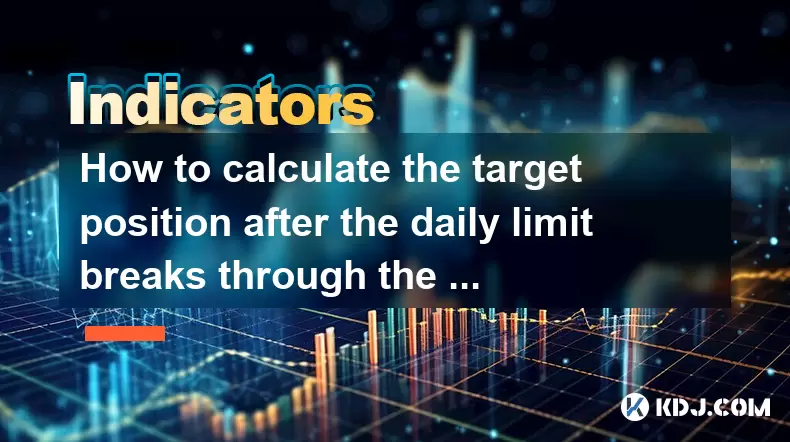
How to calculate the target position after the daily limit breaks through the previous high?
Jun 23,2025 at 02:57pm
Understanding the Daily Limit BreakthroughIn cryptocurrency trading, a daily limit typically refers to the maximum price movement allowed within a single trading day on certain exchanges. When this limit is breached, especially when it surpasses the previous high, traders often seek to calculate the target position or expected price movement following s...
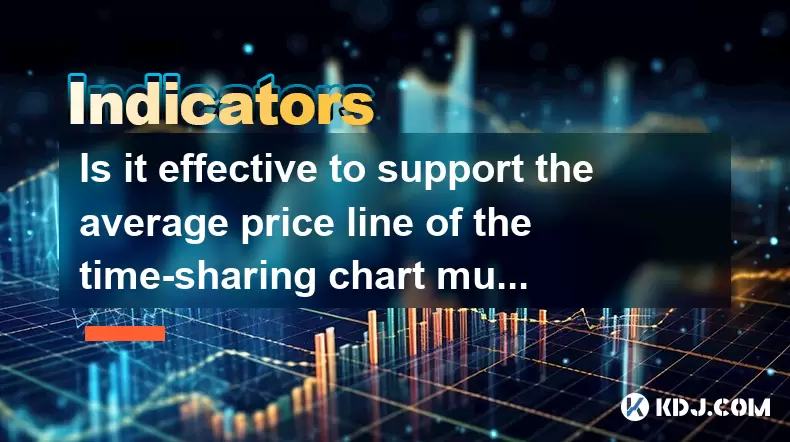
Is it effective to support the average price line of the time-sharing chart multiple times?
Jun 23,2025 at 01:36pm
Understanding the Average Price Line in Time-Sharing ChartsIn cryptocurrency trading, time-sharing charts refer to real-time price charts that display price movements over short intervals, often within a single trading day. Within these charts, the average price line, also known as the Volume Weighted Average Price (VWAP), is a commonly used technical i...
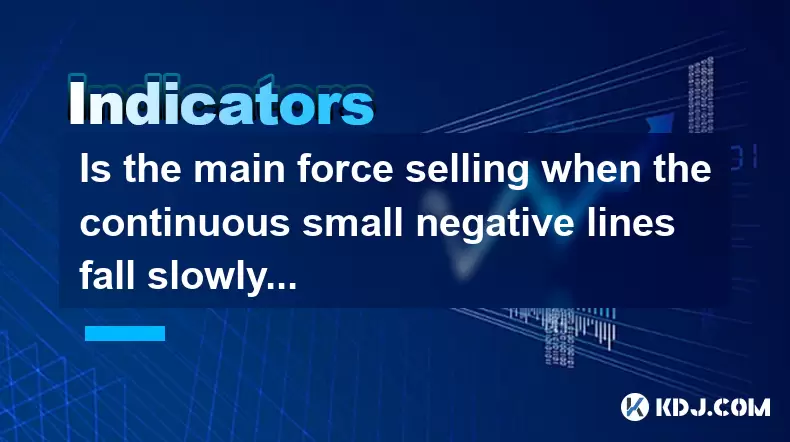
Is the main force selling when the continuous small negative lines fall slowly?
Jun 23,2025 at 03:35pm
Understanding Continuous Small Negative Lines in Cryptocurrency ChartsIn cryptocurrency trading, continuous small negative lines refer to a pattern where the price of an asset declines gradually over time with small bearish candlesticks. These candlesticks typically have short bodies and may or may not have wicks. This pattern often appears during perio...
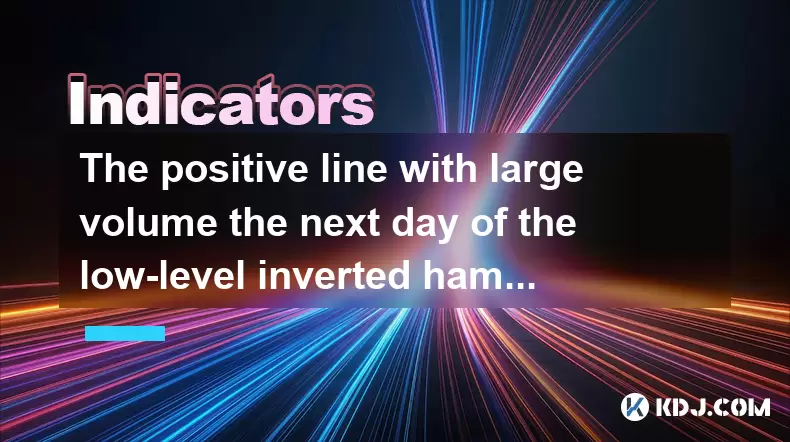
The positive line with large volume the next day of the low-level inverted hammer line confirms the reversal?
Jun 23,2025 at 01:21pm
Understanding the Low-Level Inverted Hammer LineThe inverted hammer line is a single candlestick pattern that typically appears at the end of a downtrend. It has a small real body near the bottom of the trading range and a long upper shadow, indicating that bulls attempted to push prices higher but were met with selling pressure. When this pattern forms...
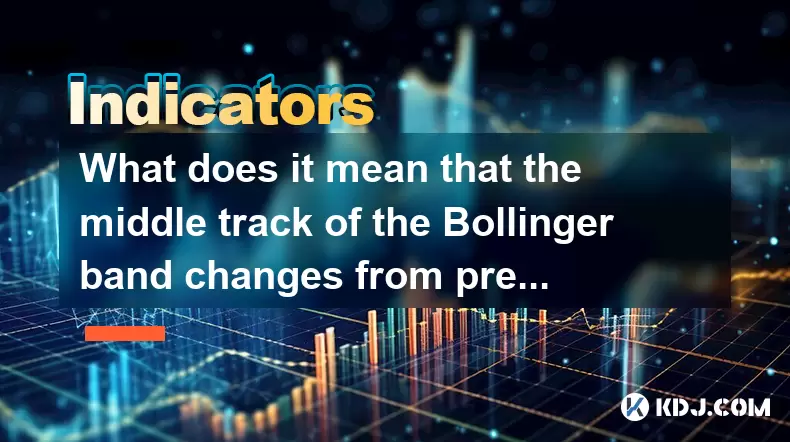
What does it mean that the middle track of the Bollinger band changes from pressure to support?
Jun 23,2025 at 03:01pm
Understanding the Bollinger Band StructureThe Bollinger Bands are a technical analysis tool used in cryptocurrency trading, developed by John Bollinger. They consist of three lines: a simple moving average (SMA) in the middle and two standard deviation bands above and below it. The middle track is typically set at 20 periods and serves as a baseline for...

How to read the sideways consolidation after the bottom volume and long positive line?
Jun 23,2025 at 02:28pm
Understanding the Sideways ConsolidationWhen analyzing cryptocurrency charts, sidewards consolidation refers to a phase where prices move within a narrow range without a clear upward or downward trend. This pattern often appears after significant price movements, such as a sharp increase followed by a period of equilibrium between buyers and sellers. In...

How to calculate the target position after the daily limit breaks through the previous high?
Jun 23,2025 at 02:57pm
Understanding the Daily Limit BreakthroughIn cryptocurrency trading, a daily limit typically refers to the maximum price movement allowed within a single trading day on certain exchanges. When this limit is breached, especially when it surpasses the previous high, traders often seek to calculate the target position or expected price movement following s...

Is it effective to support the average price line of the time-sharing chart multiple times?
Jun 23,2025 at 01:36pm
Understanding the Average Price Line in Time-Sharing ChartsIn cryptocurrency trading, time-sharing charts refer to real-time price charts that display price movements over short intervals, often within a single trading day. Within these charts, the average price line, also known as the Volume Weighted Average Price (VWAP), is a commonly used technical i...

Is the main force selling when the continuous small negative lines fall slowly?
Jun 23,2025 at 03:35pm
Understanding Continuous Small Negative Lines in Cryptocurrency ChartsIn cryptocurrency trading, continuous small negative lines refer to a pattern where the price of an asset declines gradually over time with small bearish candlesticks. These candlesticks typically have short bodies and may or may not have wicks. This pattern often appears during perio...

The positive line with large volume the next day of the low-level inverted hammer line confirms the reversal?
Jun 23,2025 at 01:21pm
Understanding the Low-Level Inverted Hammer LineThe inverted hammer line is a single candlestick pattern that typically appears at the end of a downtrend. It has a small real body near the bottom of the trading range and a long upper shadow, indicating that bulls attempted to push prices higher but were met with selling pressure. When this pattern forms...

What does it mean that the middle track of the Bollinger band changes from pressure to support?
Jun 23,2025 at 03:01pm
Understanding the Bollinger Band StructureThe Bollinger Bands are a technical analysis tool used in cryptocurrency trading, developed by John Bollinger. They consist of three lines: a simple moving average (SMA) in the middle and two standard deviation bands above and below it. The middle track is typically set at 20 periods and serves as a baseline for...
See all articles
























































































